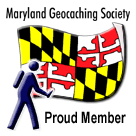WELCOME TO THE CITY OF GREENBELT

Conceived in
1937 as part of President Franklin D. Roosevelt’s New Deal,
Greenbelt was designed to provide housing for Depression-era
families in an environment that emphasized green spaces, community
involvement, and good quality of life. The new community boasted a
town center with shopping, recreational facilities (including the
first public swimming pool in Maryland), and schools. Those
amenities were accessed easily from any of the homes via walkways
and underpasses. The homes themselves were arranged into
“superblocks” that provided courtyards and playgrounds
for the children. The whole was buffered from future development by
a green belt.
The City of
Greenbelt has gone into the history books as the first community in
the United States built as a federal venture in housing. From the
beginning it was designed as a complete city, with businesses,
schools, roads and facilities for recreation and town government.
Greenbelt was a planned community, noted for its interior walkways,
underpasses, its system of inner courtyards and one of the first
mall-type shopping centers in the United States. Modeled after
English garden cities of the 19th century, Greenbelt took its name
from the belt of green forestland with which it was surrounded and
from the belts of green between neighborhoods that offered easy
contact with nature.
In 1997
Greenbelt celebrated its 60th anniversary. To coincide with this
historic event, the United States Department of Interior saw it fit
to recognize Historic Greenbelt as a National Historic Landmark.
Greenbelt is one of three greenbelt towns envisioned by Rexford Guy
Tugwell, friend and advisor to President Franklin D. Roosevelt, and
created under the Resettlement Administration in 1935 under
authority of the Emergency Relief Appropriation Act. Greenbelt was
an experiment in both the physical and social planning that
preceded its construction. Homes were grouped in superblocks, with
a system of interior walkways permitting residents to go from home
to town center without crossing a major street. Pedestrian and
vehicular traffic were carefully separated. The two curving major
streets were laid out upon and below a crescent-shaped natural
ridge. Shops, school, ball fields, and community buildings were
grouped in the center of this
crescent.
The
architecture was streamlined in the Art Deco style popular at that
time—with curving lines, glass brick inserts in the facades
of apartment buildings, and buttresses along the front wall of the
elementary school. These buttresses create vertical lines framing a
set of bas reliefs by WPA sculptor Lenore Thomas. They are some of
the finest examples of Art Deco to be found in the Washington
area.
Greenbelt was
also a social experiment. Designed to provide low-income housing,
it drew 5,700 applicants for the original 885 residences. The first
families were chosen not only because they met income criteria, but
also because they demonstrated a willingness to participate in
community organizations. (In 1941 another 1,000 homes were added to
provide housing for families who relocated to Washington in
connection with defense programs of World War II.) The first
families, who arrived on October 1, 1937, found no established
patterns or institutions of community life. Almost immediately the
new residents formed a town government. They also formed the first
kindergarten in Prince George's County. During that first year they
also formed a citizens' association, a journalism club which
published the first newspaper (still published today on a weekly
basis as the Greenbelt News Review), and a community band.
Interdenominational church services were held in the elementary
school auditorium, which also functioned as a community center. The
Greenbelt Health Association opened to provide hospital services.
Police, fire and rescue squads formed. Residents held a town fair
that first summer. In 1939 the first public swimming pool opened in
Greenbelt— the first in the Washington area. Numerous clubs
flourished. In fact, Greenbelters were so busy attending meetings
that the town council called a moratorium on meetings between
Christmas and New Year’s in 1939 to permit residents to spend
time at home with their
families.
Today many of
the original features of this planned community still exist
although the city itself has expanded to include additional
shopping centers, high rise office buildings, garden apartments,
townhouses and private developments. With the construction of the
Baltimore-Washington Parkway, the Capital Beltway, and Kenilworth
Avenue—which meet in Greenbelt—the city has become a
center of major residential and commercial development within the
Prince George’s
County.

Thanks to JPatton for helping with this hide!
